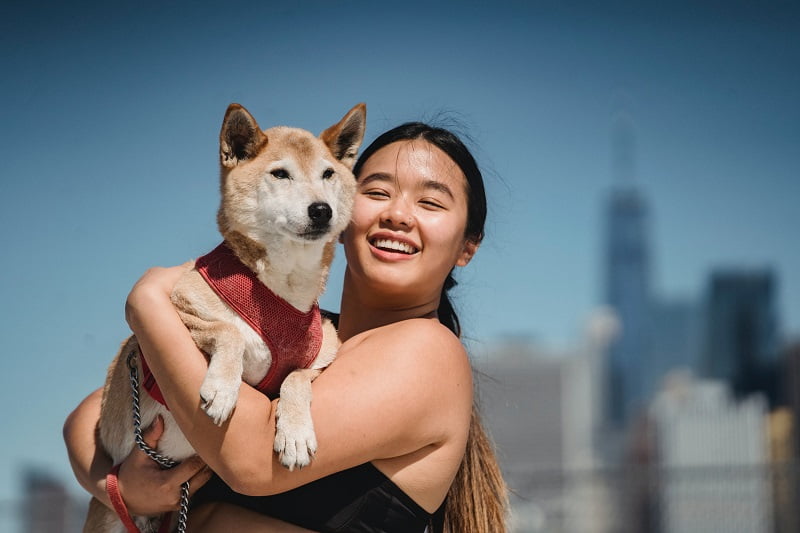
Pet Training-When To Reprimand And When To Reward
Pet Training-When To Reprimand And When To Reward When they begin pet dog training, there are a great deal of points individuals have to keep in mind. There are a great deal of various canine training strategies to attempt.
A few of these pet dog training strategies function, while various other canine training methods appear to antagonize you.
With many various facets of canine training, it is difficult to recognize what methods function the very best.
When to award your pet and also when to reprimand your pet, one of the largest points that usually perplex individuals with concerns to pet training is. Please reviewed on if you have difficulty choosing when to do which.
The majority of pet training program teachers will certainly inform you that favorable pet dog training is the very best method to make use of. There are some circumstances when you do have to reprimand your canine.
Reprimanding your canine must not take place typically, as pet dogs react far better to favorable support utilized in pet training. Prior to you find out when to reprimand your canine, you need to initially discover when to award your canine.
You ought to compensate your canine at any time your canine does something it is intended to throughout pet dog training. This can be when it rests, remains, removes where it should, brings, and so on.
The benefit you make use of throughout your pet training can be numerous points: appreciation, kind words, belly rub, rub on the head, or a reward.
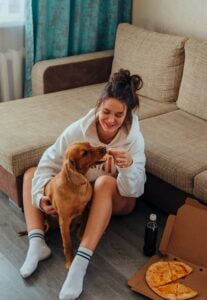
Pet dogs discover extremely promptly from favorable pet training. Pet dogs often tend to intend to make you satisfied as well as this is why they do so well with this kind of pet training. Be certain you never ever award negative actions.
Reprimanding is a sort of pet dog training that need to not be done unless needed. This can be when your pet dog leaps, gets rid of in the incorrect area, barks, roars, draws on a chain, damages something, and so on.
If you capture it in the act of doing something incorrect, you should just reprimand your pet.
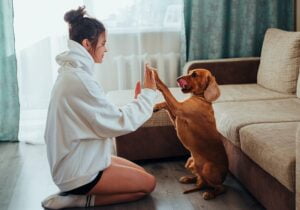
Or else, your pet dog will certainly not understand what it did. The lecture utilized for this pet training need to be a fast, sharp “no” or “poor canine.”
If you continuously do this, your words will certainly finish up being neglected by the canine. Never ever spank, strike, or regularly reprimand your pet dog.
When identifying when to reprimand or compensate your pet throughout pet training, these are all of the crucial points you require to concentrate on. Due to the fact that your canine is finding out as well as attempting its ideal, keep in mind to be individual.
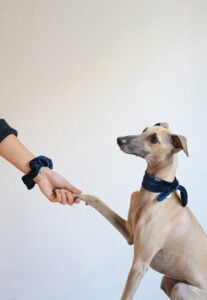
With some love and also factor to consider, your pet dog needs to do rather well with its pet dog training.
It will certainly be a gratifying experience for you both!
Pet dogs discover extremely promptly from favorable pet training. Pets often tend to desire to make you satisfied and also this is why they do so well with this kind of canine training. Be certain you never ever compensate negative habits.
Reward Your Dog When Obedience Training
Rewarding your dog is the best motivator when training. It is well known that using rewards and other positive reinforcement when obedience training a dog is the most effective method and achieves the best results.
You can make obedience training fun for the dog – and yourself too – by making a game of it. This makes both your dog and you, as the trainer, more willing and motivated to give it your all.
Incorporate a period of play at the start and the end of each training session to ensure that the session ends positively. Teaching your dog to heel is the most basic of all the obedience commands.
This refers to having the dog walk along with you on a loose lead. Heeling is generally the first obedience behavior taught to a dog, and it is easy to teach this using reward training.
Begin the training by getting your dog a good training collar and lead. Make sure the collar is strong and fits the dog properly.
If you don’t know how to fit the collar, ask a dog trainer or the pet store manager when you buy your training equipment.
As you start to walk with the dog, be aware of the dog’s position in relation to your own. If the dog begins to get ahead of you, pull gently on the leash.
This will engage the collar and provide the dog with a gentle indication that he should slow down. You may have to apply more pressure in the beginning until your dog learns to accept the discipline.
If the dog falls behind, slow down and encourage the dog to come forward. Use a lure or the dog’s favorite toy to teach him to walk by your side.
If you keep the lure at the position you’d like the dog to be, he will learn quickly to walk in the correct position.
Always give your dog lots of praise, treats, toys, and other rewards when he or she does what is expected. Dogs learn best when desired behavior is rewarded in a positive manner.
Positive reinforcement means that when a dog does what the trainer wants, the dog receives a reward.
This can be a pat on the head or a treat or toy of some kind. If the dog shows even the slightest attempt to please you, especially at the beginning of training, you should lavish positive reinforcement on him or her.
It is much less effective to attempt to train a dog through reprimands and punishment. Dogs become discouraged and confused by too much punishment. You may have to reprimand the dog sometimes to correct a potentially dangerous behavior.
For example, chasing cars or biting must be punished, but the reprimands must be direct, short and directly linked to the bad behavior. After the immediate danger is over, training should go on, based on the reward method as before.
Dogs must learn to associate rewards with good behaviors and reprimands with undesirable behaviors. It is difficult to change any negative associations once they have taken hold.
It’s easier to train the dog properly in the first place than to try and retrain him later.
You should teach your dog to associate behaviors like coming when called, heeling, and sitting on command, with the happy and fun times you shared during training.
Training Made Easy With Dog Training Aids
Wouldn’t it be wonderful if all dogs are trained? There’ll be no chewed off furniture, no scratches on the walls, no dog poop on the carpet.
The problem is, hiring a dog trainer can be rather expensive. And hiring one is not a fool proof guarantee that your dog will “learn” what was taught to him.
What most dog owners do nowadays is to do the training themselves. And this is where dog training aids prove to be useful.
One of the most common tools is the dog lead or leash. These are made up of different materials like leather, cotton web, nylon and chain. Experts advise the use of leather leashes because of its durability and ease in use.
It doesn’t cut or burn the skin and is comfortable to use. Aside from these, it is lightweight and does not produce much noise unlike chain.
Leather leashes may come in different styles and designs. It is sold in various lengths as well, the most common of which is 6 feet.
Together with the leash is the collar. This may tighten or loosen, depending on the dog‘s movement. Slip or choke, collars are usually made of leather, and come in a variety of designs like rolled, field and braided.
In choosing a collar, make sure that it fits the dog well. It must not be too tight or too loose.
Instead of a leash, you may also use a 15-foot line. This is used to control the dog from a distance.
Other aids include bait bags and pouches. These are used to make it easy for you to hand out motivators like treats and food while training.
After some training time, your dog may show some signs of improvement. At this stage, use of the leash may not be required anymore.
This is when some dog trainers use leather pull tabs and shark lines. This is also used in cases where the dog needs to undergo agility training.
The dog may feel that he is off-leash, but you are still able to control and correct him by giving the tool a slight pull.
Another aid used in training dogs for specific jobs is the whistle. Because the sound can reach far distances, this aid is ideal if training is done in large spaces such as farms and forest areas and in noisy areas.
This aid is usually used when training dogs for hunting or gathering herd. Scent bands and dummies are also used together with the whistle.
Dummies such as grouse, quail and pheasant wings are used to hold the scents. The scents make the dummies smell like real fowl.
Other aids include halters, harnesses, bells, clickers, pads and ring gates. With advances of technology, there are also new electronic aids available.
Among these are electronic collars and invisible fences. While these tools may seem complicated, with enough information they make great training aids.
Training the dog yourself has its own rewards. With the proper orientation on how training is done and the proper dog training aids, your dog can sit, stay and roll at your call. You need to allot some time and space for training.
It may be difficult, but the bond that training creates between you and your dog is one of the most important benefits that training does.
Cool Books On Dog Training
Does your dog need a good seeing to? Does he act inappropriately? Those are just a couple of questions many people are answering in dog training books. Hundred of people are writing books on dog training as it is such a big market.
Many people struggle to train their dogs on their own and people love the fact that they can make a profit out of it. I’m not saying that it is wrong to write a dog training book and charge for it, it’s good that there are book resources available.
There are people writing dog training books that have never actually owned a dog and the nonsense they blether is quite funny but then you get the serious writers.
People that have had about 30 years of dog training experience are putting their knowledge onto paper and making it available to the whole world which is fantastic.
Many people need guidance when it comes to teaching their dog basic training and books are a great way to learn.
You just have to be careful you are purchasing a book from a genuine dog trainer and not someone who can paint a pretty simple picture of dog training, because a pretty simple picture is not what dog training is about.
One of my favorite books was “Help! My dog has an attitude” written by Gwen Bohnenkamp. This book is an excellent read and full of great tips and advice.
She tells you about the problems that dogs are facing in an ever growing scary world and the pressures it puts on dogs,
whether it are trains that are rushing past, cars that are coming to close or even the drain in the middle of the street making that funny loud gurgling noise!
There is one thing about her book, it makes you realize that a lot of a dog problems are made by us, we drive our dogs to do these things but we are oblivious to it, thank goodness she doesn’t make you feel guilty about it though!
Whereas “The Dog Whisperer” written by Paul Owens is one of the books I was telling you about earlier, where people that have had no experience with dogs put pen to paper.
He writes about the simplest of training techniques and then fills his book full of psycho-babble about how to treat your dog and how to love him,
that’s not what a dog training book should be about. It has had a good few write ups but I think it is not worth the money or time to read it.
He starts of going on about how Jesus and Buddha might train their dogs and then goes on about how he felt spiritual enlightenment and a feeling of pure love for his dog. Basically he is a nut case!
Dog training books are easy enough to get and if you enjoy a good read then sit down to one, have a cup of coffee and get prepared for the next days step; actually training your dog!
How to Start Training a Dog for Agility
As a rule, agility training should start while the pet is still a puppy. However, owners could still facilitate training with older dogs.
The question “when is the dog considered old for agility training” is central to choosing when to start training the dog.
Being “old” greatly varies from dog to dog, from the extent of a dog‘s experience to the innate and natural tendencies it has. In short, there is no specific age at which the dog should be restrained from training.
However it is always far easier to start training with much younger dogs since their learned behaviors are still not rooted into their habits.
For choosing old dogs for training, the handler should not create the impression that the dog would no longer learn so there’s no need to waste time.
The attitude of the dog as much as that of the trainer is both highly essential to faster learning. The more dedicated and patient the owner is the faster the dog learns.
There are several approaches to starting training for agility. A few of which are discussed here briefly:
Physical exercise
The introduction to agility training should start with physical exercises. If the handler has enough interest to dedicate on training the dog, the age will no longer matter for it is the condition that will rule over.
Simple exercises like jumping or hopping may agitate the dog and encourage him to move a little bit. For puppies, these exercises are much easier to do since they have enough energy to use.
Let him play around
Like teaching little children, the easiest approach to agility training for younger puppies is to turn the exercises into a series of games.
The majority of puppies are capable of passing through tunnels and chutes so take advantage of this chance and introduce the tunnels, obstacles and the training area itself as huge play ground.
This approach will create positive impressions on him which will also prepare him for future training.
Promote his agility
If you don’t have a sufficient area for setting up obstacle courses, it is best to use certain games that also encourage agility. Simple equipment like improvised tunnels or walls could be made to augment training.
Keep it short
Dogs don’t experience passion when it comes to activities but they have the innate desire to please their owners.
This means that they don’t get devoted unless they are rewarded for good actions they have made and that you show your favor for their actions.
Their attention span is also very limited so they could not continue training for extended hours.
If you want to start training your dog for agility, establish the rule that you should keep each training session and each lesson as short as possible.
You don’t have to finish everything in one sitting. You should divide each exercise into sections that the dog could easily understand. Also never end with a negative note. Always ensure that the dog finishes each exercise with praise.
Training your dog for agility does not lie on how old or young he is, it lies in the foundation of responsiveness, independence, drive to work alone and to follow the command, and your desire to work with him with enough patience and knowledge of his capacities.
If you continuously do this, your words will certainly finish up being disregarded by the pet. Never ever spank, strike, or continuously reprimand your canine.
how to punish a dog – the right and the gentle way,how to punish a dog for aggression,how to punish a dog who doesnt listen,how to correct a dogs bad behavior,
dog training,saro dog training,how to train a dog,how to correct a dog,positivereinforcement,how to punish a dog,how to discipline your dog,how to discipline your puppy,dog punishment,




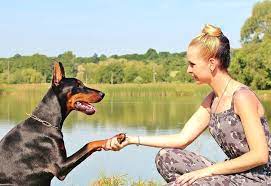
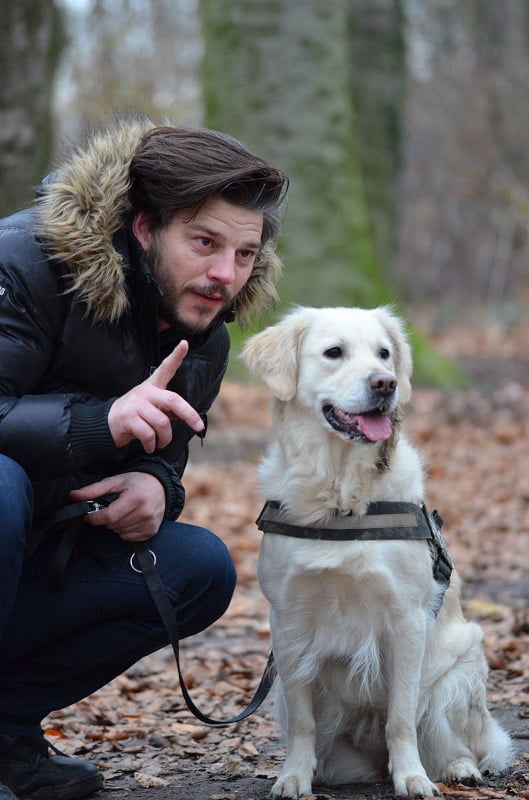

Your article helped me a lot, is there any more related content? Thanks!
Thanks for sharing. I read many of your blog posts, cool, your blog is very good.